How GPR & EM Locators Detect Hidden Pipes
Let’s take a closer look at how these tools work together and what professionals bring to the table.
Understanding the Basics of Ground‑Penetrating Radar (GPR) Technology
Ground-Penetrating Radar is a non-invasive scanning method that emits electromagnetic pulses into the ground. When these waves encounter changes in material, such as pipes or conduits, they bounce back to the surface. The GPR unit then interprets these reflections, producing an image of what lies below.
This technology is especially useful for detecting non-metallic pipes, including PVC and asbestos cement, which traditional electromagnetic methods can’t trace.
- Penetrates various subsurface materials including soil, concrete and asphalt
- Detects plastic, ceramic and fibre pipes with no need for tracer wire
- Provides high-resolution images of utility location and depth
- Operates safely in sensitive environments without excavation
What Makes Electromagnetic Locators (EML) Ideal for Metal Pipe Detection
Electromagnetic Locators use an induction method to detect metal pipes or cables that can carry a current. A transmitter sends a signal into the conductive utility, which is then traced using a handheld receiver above ground.
This method works particularly well for copper, galvanised steel, cast iron and live electrical or telecommunications lines. When pipes are buried deep or travel long distances, EML is ideal for fast and accurate tracing.
- Traces both active and passive signals in live cables and conductive pipes
- Effective even when the exact pipe route is unknown
- Locates utilities at depth and in complex networks
- Complements GPR by filling in gaps in metallic utility mapping
Why Accurate Pipe Locating is Crucial Before Excavation Begins
Imagine a backhoe operator accidentally slicing through a water main—or worse, a high-pressure gas line—on the first job day. The result is costly downtime, emergency repairs, and regulatory fallout.
Pipe locating services are the first step in damage prevention. They ensure that underground assets are found, marked and safely avoided. Contractors who skip this step risk major liabilities, worksite shutdowns, and personal harm.
- Prevents dangerous strikes on live power and gas lines
- Avoids damage to water, sewer and communications infrastructure
- Reduces costly delays caused by emergency repairs or rerouting
- Helps ensure compliance with Dial Before You Dig (DBYD) obligations
Combining GPR & EML for Comprehensive Underground Utility Mapping
While GPR and EML can be used independently, their combined use creates a more complete underground map. GPR excels at identifying non-conductive and deeply buried utilities. EML, on the other hand, is excellent for detecting and tracing conductive pipes and cables.
Together, they provide the best possible chance of identifying all underground services—giving project managers and trades complete confidence before cutting into the ground.
- GPR detects PVC, concrete, ceramic and fibre optic lines
- EML pinpoints copper, steel, electrical and telecom utilities
- Dual scanning confirms utility positions and reduces blind spots
- Mapping both conductive and non-conductive assets reduces risk
How Soil Conditions & Surface Types Impact Detection Accuracy
The effectiveness of locating equipment can vary depending on site conditions. Moisture levels, soil type, and the presence of reinforced concrete or paving all influence the performance of GPR and EML.
Experienced pipe locators adapt their scanning approach to local conditions, adjusting frequency ranges and coverage methods to maintain accurate results in all environments.
- Clay and high-moisture soils affect radar signal penetration
- Sandy and dry soils offer clearer radar imaging
- Concrete or bitumen surfaces may limit GPR depth
- Electromagnetic interference from nearby infrastructure can affect EML
The Role of Pipe Locating in Preventing Service Interruptions & Safety Incidents
When underground services are damaged, the ripple effects can be wide-reaching. The risks are too great to ignore, from traffic disruptions and power outages to environmental contamination or evacuations.
Professional pipe locating minimises these hazards by identifying utility lines before work starts. It protects workers, the public and essential services—keeping projects safe and on schedule.
- Prevents disruption to water, gas, electricity and fibre networks
- Minimises exposure to hazardous materials during excavation
- Reduces potential for insurance claims and legal liability
- Improves safety planning for confined space entry or trenching
What to Expect from a Professional Pipe Locating Service
A professional locating service brings more than just tools—it brings trained specialists who follow standards, calibrate equipment properly, and produce accurate maps for clients.
The process typically involves:
- Initial site inspection – Understanding the scope of works and visible clues
- GPR & EML scanning – Using both methods where needed
- Marking utilities on-site – With colour-coded paint and flags
- Depth estimation – Where practical, based on equipment feedback
- Reporting – Delivering sketches, digital maps or CAD overlays
Engaging a certified pipe locator ensures the right techniques are applied and underground assets are accurately interpreted.
Who Needs Pipe Locating Services & When to Engage a Specialist
Pipe locating isn’t just for large civil contractors. Builders, plumbers, electricians, and homeowners planning backyard work can benefit. The earlier a specialist is brought in, the more useful the information will be for planning and approvals.
- Builders – Before slab prep, pile boring or demolition
- Plumbers & electricians – When connecting to or avoiding existing utilities
- Civil contractors – During trenching, HDD, or road works
- Councils & asset managers – For infrastructure upgrades and maintenance
- Homeowners – Before pool, fence or deck construction
Scheduling pipe locating ahead of ground disturbance protects everyone involved and keeps your project on track.
Need Help Finding What Lies Beneath?
At Dowd’s Pipe & Cable Locating, we use advanced GPR and EML methods to precisely detect and map underground services. Whether you're coordinating a major civil project or simply installing a new fence line, our pipe locating services in Wollongong are tailored to prevent disruptions and support your success.
Contact us via our contact page to book a service or request an assessment. We're here to help you dig smart and build confidently.
